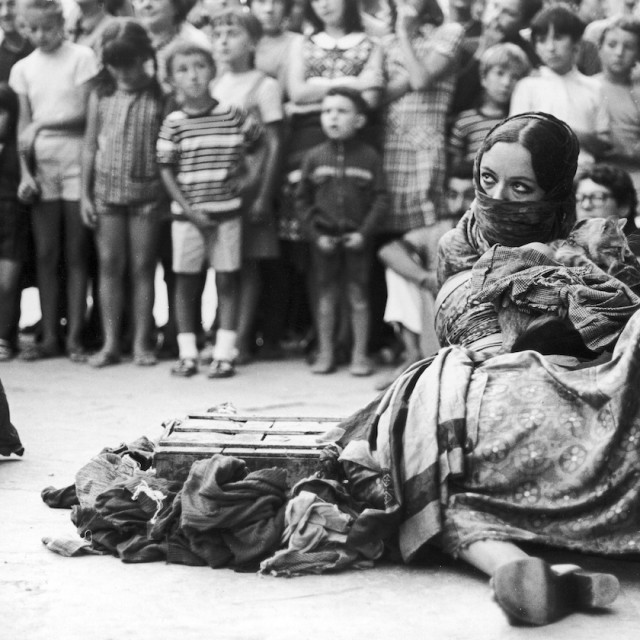Per_forming a collection #2 is the second chapter of the project devoted by the Madre to the progressive formation of its permanent collection. Through the presentation of new works by Italian and international artists, this second chapter adds to the previous chapter (Per_ forming a collection #1) detailing certain themes and introducing new ones. The exhibition includes new production as well as historical works, often created or displayed in Naples and Campania starting from the sixties of the last century up to the most recent years. One of the axes around which the first chapter developed (the role of language as a fundamental element of artistic reflection), is integrated by new works (including works by some conceptual artists such as Vincent Agnew, Robert Barry, Douglas Huebler.)
In this second chapter, more in-depth attention is also to be given to the relationship between artistic activity and the social sphere, already addressed in the first chapter: as in the original editions of We are the revolution by Joseph Beuys which join those already in the collection, in the actions of Piero Gilardi, the intervention of Giulia Piscitelli produced at the recent solo exhibition at Madre, or in the video by Eulalia Valdossera where a servant interacts simply by cleaning her and taking care of her with a colossal sculpture of the Roman Emperor Claudius kept at the National Archaeological Museum of Naples.
Particular attention is again to be given to the relationship between the sphere of art and that of theatre and performance (from the research by Spazio Libero to the experiences of Zoo, to the works and interventions by Gianni Pisani, continuing to the next generations as in the case of the British artist Jeremy Deller). Even the language of sculpture is reinterpreted through unsettling approaches that weaken the usual distance between art and life by adopting a procedural dynamic or diving into a dream-like dimension, as in the two works that enter the collection by George Brecht, one of the main animators of the Fluxus movement, and Dennis Oppenheim, both created in Naples in the seventies. The use of primary elements (fire, water, air, earth) will be explored and of the most common material (rags) as instruments of a radical artistic practice as in the works by Giuseppe Penone, Michelangelo Pistoletto and Gilberto Zorio or in the installation/action Giardino all’italiana by Gino Marotta. The artistic value of the simplest gestures will be analysed, through which the artist can produce and share knowledge, as happens in the books sewn by Maria Lai and those deleted by Emilio Isgrò. At the end of the exhibition, there is Mario Garcia Torres. La Lezione di Boetti hosted from June to October at Madre, for which an entire room is dedicated to the works of two artists from different generations placed in dialogue: Alighiero Boetti and Mario Garcia Torres.
Per_forming a collection #2 allows you to build a collection in progress that is divided into multiple dimensions: to experience the museum as a place of research, analysis, comparison, (re)discussion, participation, to describe significant episodes of the history of avant garde culture in Naples, in Italy and in the world, and to construct hypotheses about how to rethink the functions of a museum of contemporary art today, in relation to a collection that is permanent but dynamic, active, evolving, always subject to additional points of view and critical reflections. The collection at Madre museum is thus experienced as a story shared with the community which the museum addresses and in which the community, being a part of it, can recognise the protection of memory and construction of new identity, using the eyes of artists as guides that tie together the past, present and future. The project aims to develop a layered collection on numerous themes, generations and approaches, a collection that, like a living organism, grows and develops over time.
The gradual establishment of this collection is in fact based on the ongoing activities of the Research Department of the museum. To each project, sheets from the monographic room on each work and artist will be dedicated, which collected in successive notebooks, will form the catalogue in progress of the permanent collection of Madre, published by Electa. The Madre museum has also arranged internships and scholarships during the project with several universities in Campania and the Academy of Fine Arts in Naples, specifically devoted to the examination of the in progress historical collection of the museum.
